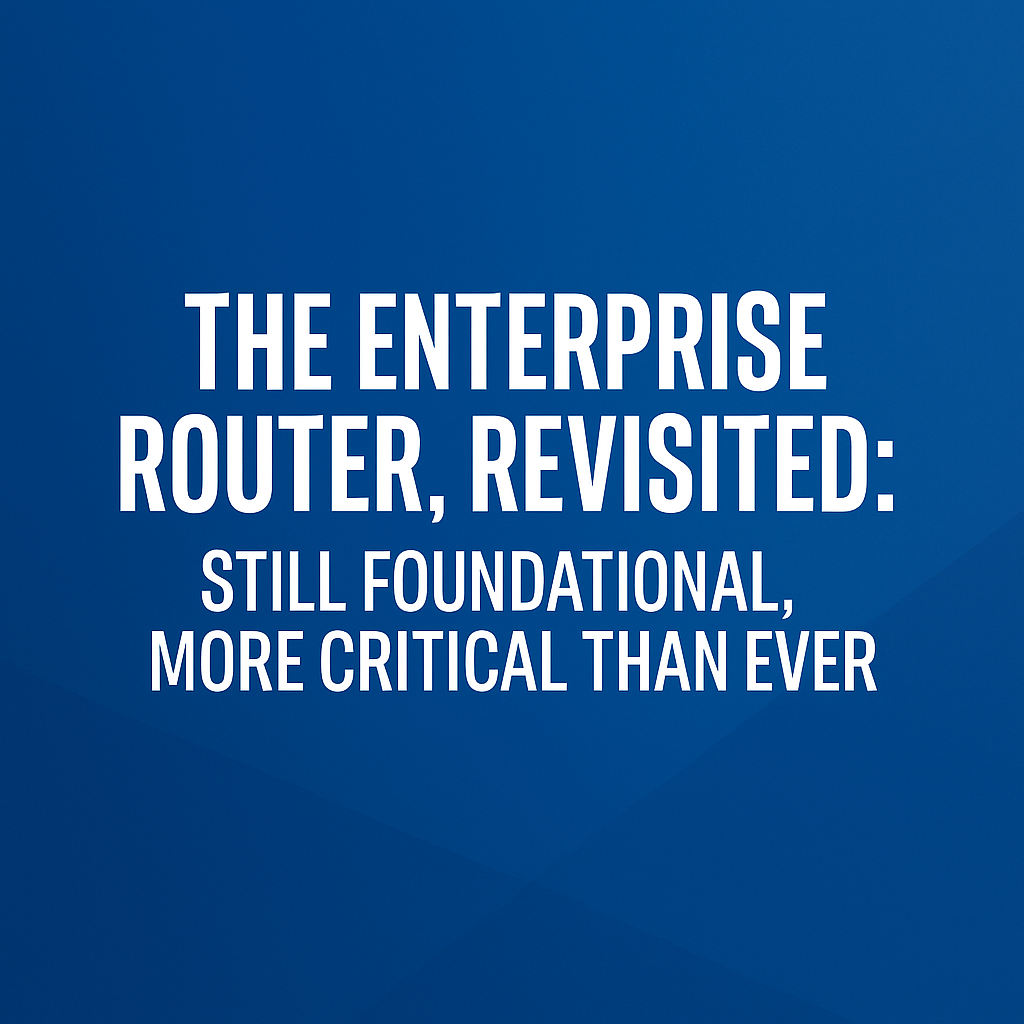The Enterprise Router, Revisited: Still Foundational, More Critical Than Ever
Routers aren’t new. In fact, for most IT pros, they were the first real “infrastructure” device we ever configured. Static routes, BGP neighbors, ACLs — this is foundational stuff.
But in 2025, with hybrid cloud, SD-WAN, IoT, remote work, and microsegmentation on the rise, the humble network router is doing a lot more than just pushing packets from point A to point B.
It’s evolved. Quietly. And for enterprise infrastructure teams, it’s worth looking at how — and why it still matters.
What a Router Really Does Today
At its core, a router still determines the best path for traffic between networks. But today’s routers are:
– Security enforcers: with integrated firewalls, threat detection, and even ZTNA capabilities baked into firmware.
– Cloud connectors: terminating IPSec tunnels or running BGP into AWS Direct Connect, Azure VPN Gateway, or GCP Interconnect.
– App-aware: using deep packet inspection or QoS tagging to prioritize Zoom over random backup traffic.
– Policy engines: applying routing decisions not just by destination, but by time of day, user role, or application context.
In short: the modern router is half switch, half firewall, half SD-WAN box — and still expected to “just work.”
Physical, Virtual, or Cloud-Native?
Gone are the days when “router” meant a 1U box with blinking LEDs and a CLI from 2003.
Today, routing functions might live:
– On dedicated hardware (Juniper, Cisco, Arista, MikroTik)
– As VMs or containers running inside your virtual stack
– In the cloud, via managed gateways or transit hubs
And yes — it’s common to mix all three. A branch might have a lightweight hardware router, routing into a virtual appliance in a regional cloud zone, which then hands off to a cloud-native backbone.
This composability is powerful — but it also means network engineers need to understand routing as a service, not just a box.
Routing Isn’t Going Away — It’s Getting Smarter
Despite the noise around “routing moving to the cloud” or “everything going mesh,” routers are still doing what they’ve always done — just with more intelligence, more interfaces, and more places to fail.
BGP still matters. OSPF still matters. Static routes still matter.
But so do APIs. And observability. And security posture tied directly into the data plane.
The router isn’t going away.
It’s just becoming the most programmable, policy-aware, and security-embedded piece of your network stack.

